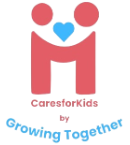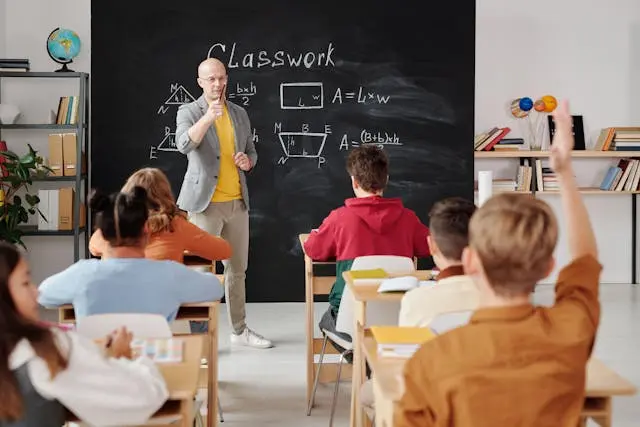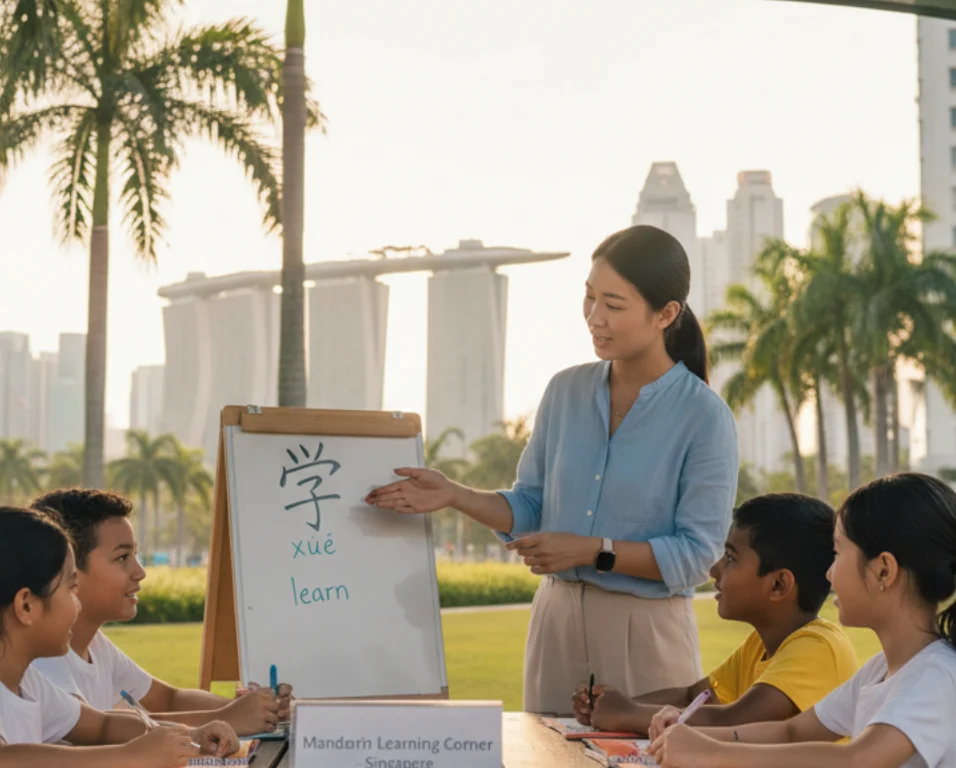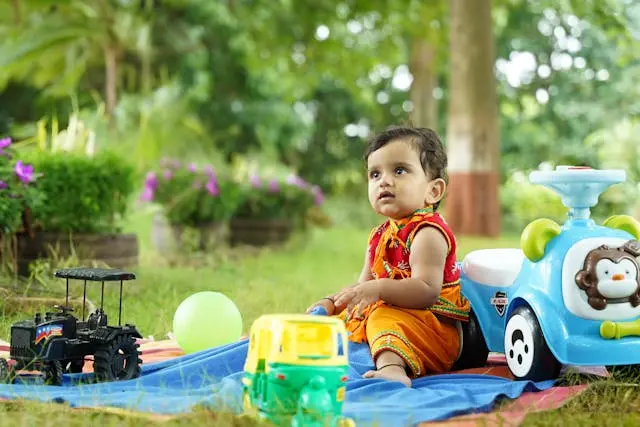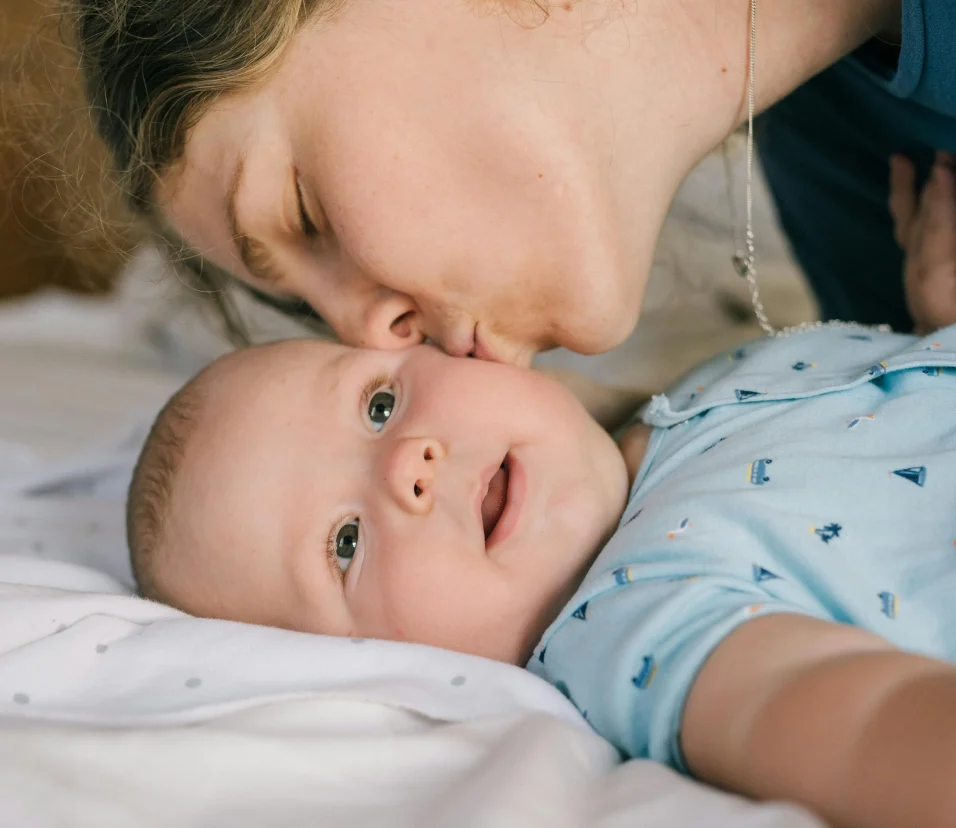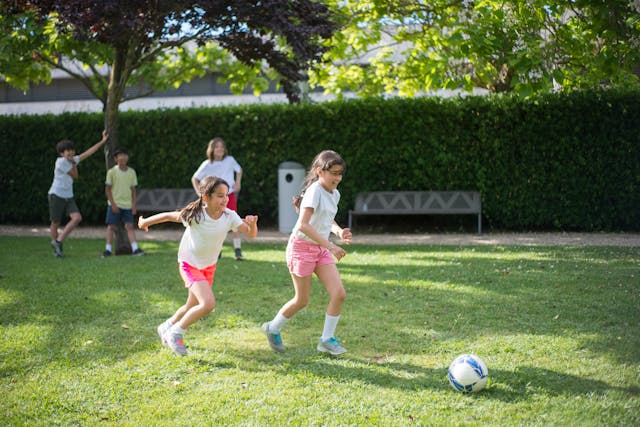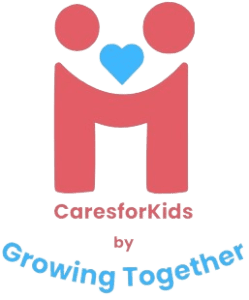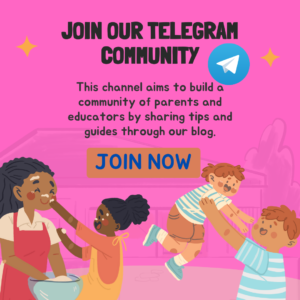Choosing the Right Multilingual Preschool in Singapore: What Parents Should Look For
Singapore’s multicultural landscape offers a wealth of options when it comes to early education. In the quest to find the best preschool in Singapore can offer your little one, many parents are prioritising programs that nurture multilingual skills. An international preschool with English, Mandarin, and even a third language exposure can give children a head start in today’s global world. But with so many schools marketing “bilingual” or “trilingual” programs, how do you identify the right fit? This guide breaks down the key factors – from the proven benefits of early multilingual exposure to the practical questions to ask on a school tour – to help you make an informed choice.
Why Early Multilingual Exposure Matters
Early childhood is a critical window for language learning. Young children’s brains are remarkably adept at picking up multiple languages without confusion. In fact, research confirms that our brains are wired to acquire languages most naturally before puberty. This means the preschool years (roughly ages 2–6) are an ideal time to introduce new languages. Children at this age can absorb different sounds and accents effortlessly, something that becomes harder as they grow older. If you’ve heard the saying “the younger the better” for language learning, it’s absolutely true – early exposure helps children develop native-like pronunciation and comfort in multiple tongues.
Beyond practical linguistics, starting young also instils a positive attitude toward languages. Kids who grow up hearing and speaking more than one language tend to view multilingualism as a normal part of life, rather than a chore. They’re less self-conscious about mixing words or making mistakes, which encourages them to keep using the new language boldly. Crucially, early multilingual exposure can ignite curiosity about different cultures – preschoolers might sing songs in Mandarin one moment and listen to a French story the next, learning that language is fun and tied to diverse customs. In Singapore’s context, where bilingualism is the norm, adding a third language early on can further enrich a child’s cultural awareness and cognitive development. As one parenting resource notes, even infants show cognitive advantages from hearing multiple languages (better attention spans and multitasking abilities from as young as seven months old). In short, those early years are a golden opportunity to lay the groundwork for fluent, enthusiastic young linguists.
How Does Multilingualism Affect Child Development?
Numerous studies have shown that growing up with more than one language brings significant developmental benefits. Far from overwhelming children, multilingualism actually gives their brains a boost. Here are some key ways that learning multiple languages in preschool can affect your child’s development:
- Cognitive Skills & Executive Function: Bilingual and trilingual children often exhibit superior cognitive flexibility and executive control – they learn to switch between languages and filter information effectively. This translates into better focus (even in noisy environments) and stronger multitasking skills. For example, a child comfortable in English and Mandarin is constantly practicing choosing the right language for the situation, which strengthens mental “muscles” for problem-solving and attention. Studies have even linked early multilingual exposure to improved memory and math and reading skills later on.
- Social & Emotional Development: Young kids who interact in multiple languages tend to become more socially adaptable and empathetic. Why? Because language isn’t just about words – it’s tied to understanding cultural cues and seeing perspectives. Research indicates bilingual children are often more sensitive to nonverbal signals and their listener’s needs. They practice reading social cues across languages and cultures, making them better communicators. Multilingual exposure can also heighten empathy: children realise people express feelings in different ways, and this understanding makes them more open-minded friends. In essence, speaking more than one language teaches kids early on that there’s more than one way to view the world – a priceless social lesson.
- Cultural Awareness: A multilingual preschool experience inherently brings in stories, songs, and traditions from various cultures. Whether it’s celebrating both the Mid-Autumn Festival and International French Week, or simply reading fairy tales from different countries, children gain an appreciation for cultural diversity. They learn to be comfortable with differences and develop a broader worldview. This cultural sensitivity goes hand-in-hand with language learning, and it feeds their natural curiosity and respect for others.
- Confidence and Communication: While any quality preschool will boost a child’s confidence, a multilingual setting gives them extra channels to express themselves. Imagine a shy child who might be hesitant to speak up in English, but comes alive during Chinese song time – multiple languages offer more opportunities to participate and “find their voice.” Over time, multilingual kids often become more confident speakers and learners because they’ve experienced communicating in different ways. They understand that if one word doesn’t work, another might – an early lesson in flexibility and resilience.
In short, multilingualism in the early years fuels brain development, social skills, and cultural smarts. It’s one of the biggest gifts you can give your child during the preschool period, with effects that last well beyond the playground years.
What Makes a Truly Multilingual Preschool?
In a truly multilingual classroom, children actively use different languages during play, lessons, and daily routines – it’s not just a weekly language class, but a whole environment.
Not all “bilingual” programs are created equal. A truly multilingual preschool goes beyond token language exposure and creates an immersive environment where multiple languages thrive. Here are some hallmarks of an authentic multilingual program:
- Language Immersion as a Lifestyle: In a quality multilingual preschool, the target languages aren’t confined to a 30-minute lesson once a week – they are woven into the fabric of each day. Teachers who are native or fluent speakers will use the second (or third) language throughout daily activities, from greeting the children in the morning to giving instructions, reading stories, and singing songs. For example, one teacher might speak only Mandarin during snack time and circle time, while an English-speaking teacher leads a story or craft in English. This natural switching creates a true immersion experience. Some international schools in Singapore even employ dual-teacher models, e.g. one English and one Mandarin teacher working as a pair in the classroom, ensuring equal exposure. The key is that multilingualism is part of the classroom environment and socialising, not just a subject.
- Daily Balance of Languages: Truly multilingual programs have a clear plan for how languages are used. Some may do half-day in one language and half in another (partial immersion), or specific days for each language, or have one teacher speak one language exclusively (the “one person, one language” approach). What you want to see is substantial and consistent exposure. Beware of schools that label themselves “bilingual” but only offer, say, one Mandarin music session a week – that’s more of an enrichment class than immersive bilingual education. A genuine multilingual preschool will aim for a significant portion of the day in each target language, whether it’s a bilingual immersion (roughly 50-50 split) or a trilingual program dividing time among three languages. This consistent routine is what helps children truly absorb and use the languages.
- Integrated Curriculum, Not Translation: High-quality programs don’t simply translate everything the teacher says into the other language – that can be redundant and disengaging. Instead, they integrate languages into the curriculum meaningfully. For instance, a class might explore the topic of “Plants” with one activity conducted in English (like a science experiment planting seeds) and another activity or story about plants in Mandarin or French. Each language is used to do real work or play, so children learn content through that language. This way, languages are associated with fun experiences and knowledge, not just repetition. Immersion preschools often emphasize hands-on, inquiry-based learning precisely because it allows kids to pick up language naturally while focused on an interesting task. If you visit a truly multilingual preschool, you might see kids building a craft, playing make-believe, or doing a project – and seamlessly switching languages as they interact, rather than sitting in rote language drills.
- Cultural Celebrations and Environment: Language and culture go hand in hand. Look for classrooms decorated with multilingual labels, books in different languages on the shelves, and multicultural artwork. Schools that celebrate various festivals (Chinese New Year, Deepavali, international days, etc.) or invite parents to share their heritage are likely truly embracing multilingualism as a holistic concept. This signals that languages are living things in the school community, not isolated vocabulary lists. A truly multilingual preschool often cultivates a sense of global awareness even in little ones – for example, by cooking international dishes or learning songs from different countries, tied to the languages they teach.
In summary, a real multilingual preschool immerses children in the languages daily. It hires qualified teachers for each language, balances exposure, and integrates language learning into every aspect of the curriculum. The difference is like swimming in a language versus dipping a toe – and for children, immersion is where the deepest learning happens.
Key Factors to Consider When Choosing a Multilingual Preschool
When evaluating preschools, parents should weigh all the usual factors (location, schedule, safety, etc.). But for a multilingual program, there are specific criteria that deserve extra attention. Here are key factors to keep in mind to find the right international preschool Singapore families would recommend:
- Languages Offered and Approach: First, clarify which languages are part of the curriculum. Does the school offer English–Mandarin bilingual exposure, or a trilingual preschool program (for example, English, Mandarin, and French)? Make sure the languages align with what you want for your child (e.g. maintaining a mother tongue or gaining a new language). Next, ask how those languages are taught – is it full immersion, partial immersion, or just a scheduled class? Ideally, the school should have a thoughtful language model (as discussed above) that gives ample time to each language daily. If the school has both local and expat teachers, even better: kids benefit from hearing authentic accents and cultural nuances from native speakers.
- Curriculum and Teaching Philosophy: The best multilingual preschools pair language learning with a strong early childhood curriculum. Look for words like “play-based,” “inquiry-led,” or “project-based learning.” Young children learn languages best in natural contexts, so a program that uses projects and play to explore themes will keep them engaged. For instance, project-based, inquiry-led learning allows kids to explore a topic in depth – maybe a project about “My Community” where they learn relevant terms in each language, do art, outings, etc. This hands-on approach has a double benefit: it builds cognitive and social skills while reinforcing new vocabulary in meaningful ways. Many top international preschools in Singapore (including Lumina International School) follow frameworks inspired International Baccalaureate (IB), emphasising curiosity and critical thinking alongside language immersion. In contrast, a very rigid, worksheet-driven program might not provide the rich language context that children need. So, ask about the school’s educational philosophy – you’ll want one that values exploration and real-world learning experiences.
- Teacher Quality and Stability: In a multilingual classroom, teachers are the linchpin. Find out the qualifications and experience of the staff, particularly the language teachers. Are they trained in early childhood education? Do they have experience in bilingual settings? Ideally, all teachers should have recognised diplomas or degrees in early childhood and a track record of working with young kids. Also, inquire if the school uses dedicated language teachers or co-teachers, and if those teachers are native speakers. Consistency matters too – high staff turnover can disrupt the language learning process, since children form bonds and learn best from teachers they know well. A good sign is when schools mention long-term teachers or a low turnover rate. Passionate, culturally-aware teachers who believe in multilingual education will create the warm, encouraging environment your child needs.
- Class Size and Individual Attention: Small class sizes can make a big difference, especially for language learning. In a more intimate class, each child gets more opportunities to speak and participate – crucial for practicing new languages. Teachers can also tune in to each child’s progress and needs. Look for preschools that are “intentionally small” or limit group sizes to ensure personalised attention. For example, Lumina International School caps its class sizes so that every child is truly seen and supported, allowing teachers to build strong bonds and gently guide each child’s language development. A general guideline might be a teacher-child ratio of around 1:6 to 1:8 for this age, but even more important is the overall class atmosphere. During your visit, observe if children look engaged and if the teachers are able to interact with each student. A bustling, noisy classroom with 20+ kids and one teacher might mean your child gets lost in the crowd, whereas a smaller, well-supported class is more conducive to practicing conversational skills in multiple languages.
- Environment and Resources: A multilingual preschool’s environment should reflect its languages. Are there plenty of age-appropriate books in each language available? Do the learning centers (like dress-up corner, reading nook, etc.) include multicultural elements? Check if the school provides rich language materials – things like flashcards, labels around the room in different languages, audio resources (songs, rhymes) and hands-on materials (puzzles with words, etc.). Also consider the overall facilities: is there space for active play (gross motor development supports learning too), and areas where small groups can work with a teacher (useful for language practice)? A school that invests in a stimulating, print-rich environment in each language demonstrates a real commitment to multilingual education.
- Philosophy on Continuity and Primary School Prep: While preschool is about the here-and-now, it’s worth asking how the program prepares children for their next step. If you plan to continue in a bilingual primary school, does the preschool curriculum align with that? Even if not, a strong multilingual preschool will ensure children have a solid foundation in core skills (literacy and numeracy in their languages) as well as the confidence and adaptability to transition anywhere. Some schools note that their graduates thrive in both local and international primary schools because of the balanced foundation they’ve received. The goal is not just rote learning of words, but developing little thinkers and effective communicators. So ask how they support children’s overall development and how they gauge readiness for primary – the answer should mention languages and social-emotional growth, not just academics.
By considering these factors – language model, curriculum, teachers, class size, environment, and continuity – you’ll get a comprehensive picture of each preschool’s strengths. The right multilingual preschool in Singapore will strike a balance: a nurturing, child-centred approach that also delivers a rich linguistic experience.
How Multilingual Preschools Prepare Children for a Global Future
In the 21st century, being comfortable in multiple languages is more than just a “nice to have” skill – it’s increasingly a foundation for global citizenship. A great multilingual preschool doesn’t only teach ABCs in two languages; it actively prepares children to navigate and contribute to a world that is interconnected. Here’s how:
- Global Awareness from Early Years: Children who grow up hearing different languages also learn about the cultures behind those languages. Through stories, celebrations, and interactions, they begin to grasp that the world is wide and wonderfully diverse. This early exposure plants the seeds of open-mindedness. For example, a child might learn about French pastries or Indian festivals in the context of language learning, realising that different cultures have unique traditions. Such experiences foster respect and curiosity rather than apprehension about differences. According to educators, early multilingual exposure actually encourages children to become global citizens who appreciate and respect diversity. They learn from a young age that no culture or language is “weird” or inferior – an attitude that will make them inclusive and empathetic adults.
- Adaptability and Confidence in New Environments: A child who has spent preschool switching between English and Mandarin (and perhaps a third language) is likely to be less intimidated by new environments later on. Whether it’s meeting a new classmate from another country or eventually studying abroad, these kids have a track record of adapting. They know what it’s like to not understand every word, and they’ve developed strategies like observing context, reading body language, and then diving in to communicate. This adaptability is a hallmark of global competency. Essentially, multilingual preschoolers are practicing how to learn and function outside their comfort zone – a skill that will serve them in global workplaces and multicultural communities. They become more resilient and willing to embrace change.
- Communication Skills for a Global Economy: From a practical standpoint, being bilingual or trilingual is a tremendous asset in the future job market. But beyond the resume, these children gain communication skills that monolingual peers may take much longer to develop. They can switch between languages and even serve as a bridge between people who speak different tongues. Think of the child who can chat with Grandma in Hindi, play with friends in English, and sing songs in Mandarin – that flexibility to connect with others is the essence of thriving in a global society. As they grow, they’ll be able to learn additional languages more easily, work in international teams, and appreciate perspectives from different cultures. In a world where companies and communities are globally linked, these are invaluable skills.
- Leadership and Cross-Cultural Collaboration: Some multilingual preschools incorporate elements like community projects or sustainability themes approached through different languages. For instance, children might do a simple recycling project, sing about it in more than one language, or participate in a charity drive where they interact with people from various backgrounds. These experiences teach kids that action and understanding go hand in hand. Programs like Lumina’s emphasise thinking globally and acting locally, even for young kids – through hands-on projects that build a sense of responsibility and compassion. When children see that they can connect with others (regardless of language) to solve problems or help the community, they’re stepping into the shoes of global citizens. They practice kindness and leadership in an age-appropriate way, which later translates into the confidence to lead and collaborate in diverse settings.
- Foundation for Lifelong Learning: Finally, a multilingual early education sets the stage for lifelong learning. Kids discover that there’s always more to learn (another word, another custom, another viewpoint). They carry that curiosity forward. Moreover, research suggests bilingualism can contribute to cognitive resilience later in life – potentially keeping their brains agile as they age. While that’s far down the road for your little one, it underlines that the benefits of multilingualism truly span a lifetime. By giving your child this foundation, you’re equipping them not just for primary school, but for the global stage they’ll inherit as adults.
In summary, a multilingual preschool experience is about much more than speaking several languages. It’s moulding a child who is comfortable anywhere, empathetic to others, and excited about the world. These are the qualities of a global citizen. As Finland’s education strategy puts it, multilingualism is a foundation for global citizenship – and many forward-thinking preschools, such as Lumina International Preschool, build their programs around this principle. By choosing a multilingual program, you’re not just preparing your child to do well on spelling tests; you’re preparing them to shine on the world stage with confidence and understanding.
Smart Questions Parents Should Ask
As you narrow down your options, it’s wise to go on school tours (in-person or virtual) and ask plenty of questions. Showing that you’re a thoughtful parent not only gets you the information you need, but it also signals to the school that you value education – something good schools appreciate. Here are some smart questions to ask when evaluating a multilingual preschool:
- “What is your educational philosophy and how do languages fit into it?” – This is open-ended but crucial. You want to hear that the school has a clear teaching philosophy (e.g. play-based, Montessori, inquiry-driven) and that multilingualism is woven into that philosophy. If the answer is only about academic results or if they seem to have no coherent approach, that’s telling. Ideally, the director or teacher will describe how language learning is part of their whole-child approach (for instance, “We believe children learn through play, so our Mandarin and English teachers plan thematic play activities together for a truly bilingual experience.”).
- “How is a typical day structured in terms of language use?” – Ask for a rundown of the daily schedule, highlighting when each language is used. For example, do they have an English morning circle and a Chinese one in the afternoon? Are teachers consistently speaking their respective languages throughout the day? This will show you how balanced and immersive the program really is. You could follow up with: “If my child is new to one of the languages, how will they be supported during those activities?” A good school might explain how teachers use gestures, visual aids, or buddy systems to help newcomers, which is reassuring.
- “What are the class sizes and teacher-student ratios?” – As discussed, smaller is generally better for language practice. If the class is larger, ask how they ensure each child gets to participate (e.g. do they split into small groups for language activities?). You can also ask how many teachers or assistants are in the room. Sometimes bilingual classes have two teachers (one for each language) present together, which effectively halves the ratio during activities. The goal is to gauge how much individual interaction your child will get, especially in the non-dominant language.
- “Can you tell me about the teachers’ backgrounds?” – Don’t be shy to ask about the qualifications and experience of the staff. For each language taught, there should ideally be a teacher proficient in that language and trained in early childhood. You could ask, “Are the Mandarin/French/etc. teachers native speakers? Have they taught preschoolers before?” and “Do the teachers receive ongoing training?” Great schools will proudly share that their teachers are well-qualified and that they invest in continuous professional development. If they dodge this question or seem to have high turnover (“we’re hiring a new Mandarin teacher…”), take note.
- “How do you incorporate play and project work, and could you give an example?” – This question checks how the school translates philosophy into practice. You might hear a wonderful philosophy, but an example drives it home. For instance, maybe they’ll tell you about a project where kids explored “the marketplace” by role-playing a market in English and Mandarin, complete with pretend money and produce – a concrete example that shows they make learning fun and contextual. Also, if the school has special features like a garden, cooking activities, or field trips, ask if those are done in multiple languages. The richer the examples, the more confident you can be in their curriculum.
- “How do you involve parents in the learning process?” – Given that you’re keen on reinforcing languages at home, it’s good to know how the school views parent engagement. Do they send home updates on new vocabulary or songs? Do they have parent-teacher meetings where they discuss language progress? Some schools might have events (cultural days, parent workshops on bilingualism, etc.). If the school mentions things like weekly newsletters in both languages, parent observation days, or workshops, it shows they see parents as partners. One that discourages parent involvement or says little about it might not prioritise that relationship.
- “How do you handle children who are stronger in one language than the other?” – Many bilingual kids are dominant in one language (often English, in Singapore’s context). A smart question is how the school supports a child’s weaker language so they progress, and also how they keep the stronger language developing. You’re looking for answers about differentiation: maybe extra attention during certain activities, or encouraging the child’s confidence in the new language by leveraging their interests. It’s also fair to ask, “What if my child refuses to speak the second language initially?” (a common scenario). A good answer might be that teachers never force speaking but use fun engagement to draw the child in, and that, over time, kids open up.
- “What do most children do after graduating from your program?” – This can be illuminating. If the preschool is truly international and multilingual, its graduates might go on to a variety of primary schools – local schools, international schools, even schools abroad. The response will tell you if the preschool is used to preparing kids for local P1 (and thus covers things like phonics and local MOE Mandarin basics) or if they channel into certain international kindergartens. There’s no right answer here, but it helps you understand if the preschool’s outcomes align with your plans. If, for example, they say many graduates enter local primary school with high Chinese competency, that’s a good sign if you aim for a local school.
- “Is your school licensed or accredited, and do you follow any external benchmarks?” – In Singapore, preschools should be licensed by the Early Childhood Development Agency (ECDA). Asking this is mostly to double-check basic credibility (Lumina, for instance, is ECDA-registered). Some international preschools might also follow an overseas accreditation or an IB early years framework. It’s reassuring to hear that they meet or exceed standards set by a governing body. If a school isn’t licensed or gives a vague answer about oversight, that’s a red flag you don’t want to ignore.
- “Can I sit in on or trial a class with my child?” Lastly, it doesn’t hurt to ask if they offer any immersion days or trials. Not all schools do, but if they do, it’s a fantastic way to observe the class dynamic and how your child responds. Even a short observation can speak volumes more than glossy brochures. You could frame it as wanting to see the multilingual environment in action to ensure it’s the right fit. Schools confident in their program will understand this desire.
Asking these questions will not only arm you with the information to compare schools, but you’ll also get a sense of the school’s communication style and openness. The answers – and how they answer – can reveal the school’s true values. Take notes, compare responses, and don’t hesitate to ask follow-ups. Remember, as a parent you have every right to be thorough when it comes to your child’s early education.
Conclusion
Choosing the right multilingual preschool in Singapore is a journey that combines head and heart. You’re looking for a place where your child will be happy, engaged, and growing – linguistically, cognitively, and emotionally. Early childhood is the perfect time to open the door to languages, and the preschool you choose can lay the foundation for your child’s communication skills and worldview for years to come. A quality program will offer early multilingual exposure in a nurturing, play-filled environment, guided by skilled teachers who understand both language development and the magic of childhood. Whether it’s through daily English-Mandarin interactions or adding a third language like French or Spanish into the mix, the right school will make multilingual learning feel as natural as playtime.
In Singapore’s vibrant educational landscape, schools like Lumina International Preschool have emerged as models of what’s possible – blending language immersion, project-based learning, and personal attention to create an enriching early childhood experience. By considering the factors we discussed – and trusting your instincts about where your child will flourish – you can find a preschool that feels like a second home. One day, you’ll watch your little one confidently switch between languages and navigate multicultural settings with ease, and you’ll know you made the right choice. Multilingualism is a foundation for global citizenship, and it starts with that first step into the classroom. Here’s to choosing a preschool that will open up your child’s world, one happy learning experience at a time!
